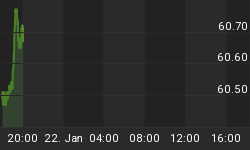The World Gold Council reports today (![]() WGC Report Q2 2009) that investment demand is to remain at the forefront of gold demand. While demand for gold jewellery is down sharply in recent months, demand from the investment sector was strong and central banks became net buyers of gold again. Central banks bought 14 tons of gold more than they sold, the first quarterly net purchases since at least 2000, according to the council, based on figures from London-based research company GFMS Ltd. GFMS wouldn't identify any of the buyers but it is believed that China is continuing to accumulate gold bullion reserves - after surprising analysts by buying some 454 tonnes since 2003 and increasing their gold holdings by 75% from 600 tonnes in 2003 to 1,054 tonnes today.
WGC Report Q2 2009) that investment demand is to remain at the forefront of gold demand. While demand for gold jewellery is down sharply in recent months, demand from the investment sector was strong and central banks became net buyers of gold again. Central banks bought 14 tons of gold more than they sold, the first quarterly net purchases since at least 2000, according to the council, based on figures from London-based research company GFMS Ltd. GFMS wouldn't identify any of the buyers but it is believed that China is continuing to accumulate gold bullion reserves - after surprising analysts by buying some 454 tonnes since 2003 and increasing their gold holdings by 75% from 600 tonnes in 2003 to 1,054 tonnes today.
As the World Gold Council reports says "gold still accounts for less than 2% of total reserves. As Chinese official reserves continue to grow (which it is fair to assume will occur over time), more gold will be required just to maintain a constant proportion. It is clearly more than a remote possibility that China could follow through on its concerns regarding the outlook for the US dollar by further diversifying its exposure into gold." Other large creditor nations of the US such as Russia and some of the OPEC nations have also expressed concerns about the deteriorating US fiscal situation and the value of their large dollar reserves and are likely to also be diversifying into gold.
While investment demand in Q2 2009 was below the exceptional levels seen in Q1 (when economic and financial sector uncertainty was at extreme levels), the World Gold Council found that identifiable investment demand still surged 46% in Q2 2009. Net retail investment in Q2 2009 was up 12% on the levels of a year earlier. Investor inflows in western markets remained very strong. The more traditional non-western markets such as India (with the exception of Turkey and notably China) generally experienced weaker investment demand. Investors bought 222.4 tons of gold in the quarter, 46 percent more than a year earlier as an alternative to more mainstream investments such as stocks and bonds.
The report gives a very interesting snapshot as to how the dynamics of the gold market are changing. The market is no longer overly dependent on jewellery demand nor is it overly dependent on jewellery/ investment demand from the Indian subcontinent. With supply remaining anemic at best and a more diversified demand base gold's fundamentals look as sound as ever. In the unlikely event that the global financial and economic crisis abates in the short term, then investment demand would be expected to fall. But an improvement in the global economy and consumer spending would likely see a resumption of jewellery demand (from western, Middle Eastern, Asian and other international markets) supporting the market.
Also of interest is that while consumers demand for jewellery has fallen sharply and indeed some of the cash strapped public has been selling their gold to gold scrap merchants, the smart money of central banks, institutional investors and high net worth clients are continuing to allocate funds to gold in order to gain diversification.
















